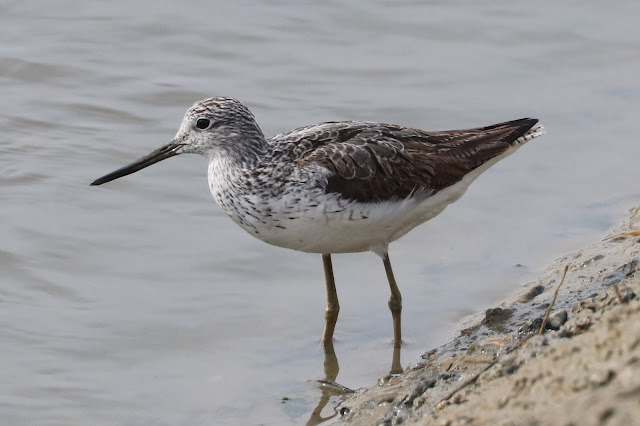September Wetland Bird Survey Medmerry
The September Wetland Bird Survey (WeBS) at Medmerry was fairly
eventful. WeBS are performed once a month throughout the year, the data is
submitted to the British Trust for Ornithology (BTO) and gives an indication as
to how our wetland birds are faring. (For more information visit https://www.bto.org/our-science/projects/webs).
Alongside the thousands of gulls to count there was a good
turnout of less ubiquitous species. At this time of year wheatears are one of
the more conspicuous migrating birds at Medmerry, and several were dotted
around the reserve. A whinchat perched on a post was a nice addition. In
keeping with the chat theme, an increase in the number of stonechats on the
site was evident. This happens annually in the autumn as stonechats move
towards coastal sites; Medmerry usually does well and in October 2017 I
recorded 51 stonechats around the site, I believe this is the greatest number
ever seen on a single site in Sussex.
Whilst approaching the first reservoir that we survey an
osprey flew overhead carrying a large fish. It was struggling to enjoy its
catch as a herring gull had taken objection to its presence. A high-pitched
‘seeping’ sound alerted me to a kingfisher nearby, although it was a while
before it revealed itself. On the reservoir itself a large gathering of ducks
had formed. With most male ducks in eclipse plumage (see https://en.wikipedia.org/wiki/Plumage#Eclipse_plumage),
the flock of 36 pintail was not immediately apparent in amongst the mallards.
This was quite an exceptional flock for the time of year at this site. As we
turned to leave the reservoir a yellow wagtail exclaimed its sneezing call as
it flew over our heads.
A bit later on we had re-found an osprey, this time perched
on a dead tree. (If you see an osprey perched up, it is seemingly always on a
dead tree!) All of a sudden every gull and other bird in the centre of the
reserve had taken to the air. Upon checking the perched osprey we saw that it
had not moved leaving us unsure as to what had caused this disturbance. Another
osprey then manifested in the wheeling flocks, this second individual being the
cause of the panic. The perched osprey took flight and we watched as the pair
of them circled around causing absolute mayhem amongst the other birds.
 |
| Greenshank. Photo courtesy of Les Phillips. |
As for waders, a couple of greenshank and whimbrel were
present among the more common species such as redshank and lapwing. With over 3,200
individual wetland birds counted, some interesting species totals were 1,792
herring gulls, 244 mediterranean gulls and 14 little egrets.
Hugh Baggaley



Comments
Post a Comment